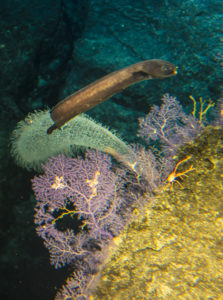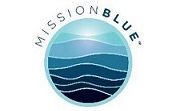Hawaiian Seamount Expedition Results in Possible Discovery of New Species of Coral: Purple Haze
On September 9th 2016, an expedition team led by Dr. Greg Stone successfully completed a three-day submersible dive on three Hawaiian seamounts, two of which have never been explored by human-occupied submersibles before. The science team was comprised of expedition team leader, Dr. Greg Stone, Dr. Sonia J. Rowley, Dr. M. Sanjayan of Conservation International, and also included photographer Michael Garland, cinematographer Luis Lamar of Woods Hole Institute, Associated Press correspondent Caleb Jones, and Baum Foundation President Glenn Bucksbaum. Terry Kerby, the chief submersible pilot led the expedition team around the seamounts while they conducted video and photographic surveys and collected rock and water samples. Deep sea dives are crucial to our understanding of the ocean as there is still much more to learn. Our knowledge of the deep ocean is still less than that of the moon. “There will always be the unexpected when you go into the deep ocean,” said Conservation International’s Greg Stone.

At Cook Seamount, an eel swims by a possible new species of coral called “Purple Haze.”
The first two days of the expedition were spent at the two unexplored seamounts, Cook and McCall Seamounts. There they saw a rare Dumbo octopus and deep-sea sharks such as a purple chimaera. The last day of the expedition was spent exploring Lo’ihi Seamount, which is an active underwater volcano that will rise to become the next Hawaiian island tens of thousands of years from now. Lo’ihi is known for its hydrothermal vents that constantly pump out iron into the ocean. Microscopic organisms that form the basis of the marine food chain thrive off iron output, which makes Lo’ihi an essential component to the overall balance of the Pacific Ocean.
One of the biggest sightings of the trip was at Cook Seamount with the possible discovery of a new species of coral, dubbed “Purple Haze.” Dr. Sonia J. Rowley was the marine biologist to notice the thin, violet coral fan and states, “I need to go home, look through the literature…and also run some genetic analyses. But as this is a new seamount… that no one has dived on before, it wouldn’t be any surprise to me if this could be a new species.”
“Making science expeditions like this work involves a lot people, coordination and commitment. It starts with the vision of the expedition leader, relies on the skills of the ship captain, submersible pilot and crew which is all in honor of dedicated marine scientists doing their work. This expedition was really rich with both visual and journalistic storytellers aboard. Charting unexplored places on earth feels like how it might be going to other realms in space: exhilarating!” said, Glenn Bucksbaum.
vvlx,
hentai,
xporn,
xnxx,
sex việt,
Family Practice Doctors Near Me,
Ratify Treaties,
Best Hookup Apps,
Brunch On A Wednesday,
Comfortzone,
Plaza Premium Lounge Orlando Reviews,
Catering 77002,
Cauliflower And Coconut Curry,
Usa Rail Pass,
Active Duty Service Member,
Patch American Flag,
Farfetch Coupon Code,
Connect Google Mini,
Nike Mens High Top,
Bronny James Usc Basketball,
Anal Sex Prep,
Aesports,
Check Balance On Debit Card,
Add People Trustpilot,
Skype Ids,
← Artist Katy Grannan Premieres Film, “The Nine” at Mill Valley Film Festival October 11th
Sites Unseen, Exhibition Launched, Featured in San Francisco Chronicle →




